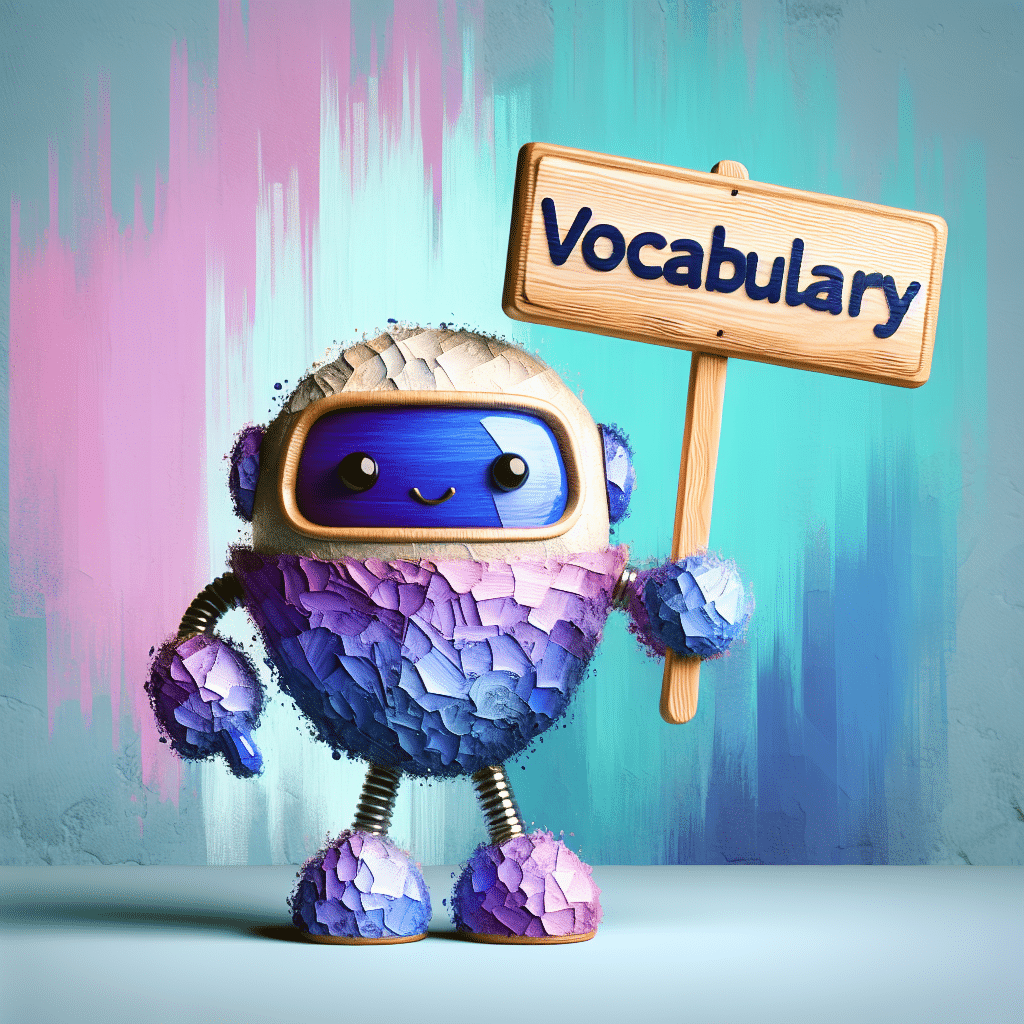If you’re in the field of artificial intelligence or you’re interested in it, the terms below are terms you may have seen before but didn’t have the time to check. The fields of artificial intelligence and machine learning are expanding every day and saw huge boosts in the late 2010s to early 2020s.
Ever since ChatGPT launched in 2022, AI growth has been exponential with almost every business adopting its use or talking about it. The market for AI technologies is expected to grow to over 1.8 trillion US dollars by 2030. That’s trillion with a ‘T’.
To understand it, we need to learn some of the lingo. Some of these aren’t for beginners, but the more you learn about ML, NLP, and AI, the easier it is to learn each new word. Think of this as a pocket dictionary for Artificial Intelligence acronyms.
Here are selected acronyms sorted alphabetically:
1. A* – A Star Algorithm
A* (pronounced “A star”) is a popular algorithm used in computer science for finding the shortest path between nodes in a graph. It combines features of Dijkstra’s algorithm and the Greedy Best-First-Search algorithm. A* uses a heuristic to estimate the cost from the current node to the goal, helping it to efficiently find the optimal path. This heuristic guides the search process and allows A* to often find solutions faster than other pathfinding algorithms. Heuristics are not usually optimal but they serve the purpose.
2. ADA – Advanced Driver Assistance Systems
Advanced Driver Assistance Systems (ADAS) are technologies designed to enhance vehicle safety and driving experience. These systems use a combination of sensors, cameras, and radar to assist drivers with tasks such as lane-keeping, adaptive cruise control, automatic braking, and collision avoidance. ADAS aims to reduce human error and improve road safety by providing real-time information and intervention capabilities.
3. AI – Artificial Intelligence
Artificial Intelligence (AI) refers to the field of computer science focused on creating systems and machines that can perform tasks that typically require human intelligence. It is primarily learning from data (machine learning), understanding natural language, recognizing patterns, and making decisions. AI can be applied in various domains, from virtual assistants and autonomous vehicles to medical diagnosis and financial forecasting.
4. API – Application Programming Interface
An Application Programming Interface (API) is a set of rules and protocols that allows different software applications to communicate with each other. It defines the methods and data formats that programs can use to request and exchange information, enabling developers to integrate various services and functionalities into their own applications. For example if data is requested on the front end, a protocol in the form of APIs is needed to access that data and present it to the front end used. Of course the front end used doesn’t know or see this.
6. ANN – Artificial Neural Network
An Artificial Neural Network (ANN) is a computational model inspired by the human brain’s structure and functioning. It consists of interconnected nodes (neurons) organized in layers: an input layer, one or more hidden layers, and an output layer. ANNs are used in machine learning and artificial intelligence to recognize patterns, make predictions, and solve complex problems by learning from data through training. They are foundational to many AI applications, such as image and speech recognition.
7. AUC – Area Under the Curve
Area Under the Curve (AUC) is a performance metric commonly used in classification problems to evaluate the quality of a model. Specifically, it refers to the area under the Receiver Operating Characteristic (ROC) curve, which plots the true positive rate against the false positive rate at various threshold settings. AUC measures the ability of a model to distinguish between positive and negative classes, with a value of 1 indicating perfect performance and 0.5 indicating no discriminative ability (similar to random guessing).
8. BCI – Brain-Computer Interface
A Brain-Computer Interface (BCI) is a technology that enables direct communication between the brain and an external device. BCIs translate neural signals into commands that can control devices like computers, prosthetics, or communication aids. This technology is used in various applications, including assistive devices for individuals with disabilities, cognitive enhancement, and research into brain function.
9. BERT – Bidirectional Encoder Representations from Transformers
BERT (Bidirectional Encoder Representations from Transformers) is a deep learning model designed for natural language processing (NLP). Developed by Google, BERT improves the understanding of context in language by processing text bidirectionally, meaning it considers the entire context of a word from both directions (left and right) rather than just one. This bidirectional approach allows BERT to achieve state-of-the-art results on various NLP tasks, such as question answering and sentiment analysis. This is a revolutionary technology in LLMS.
10. BOW – Bag of Words
Bag of Words (BoW) is a simple and commonly used method in natural language processing and text analysis. It represents a text by its words, disregarding grammar and word order, but keeping track of the frequency of each word. In essence what it does is creates a “bag” of words from the text and uses this to construct a feature vector for machine learning models. BoW is useful for tasks like text classification and sentiment analysis, though it may lose contextual information and semantic relationships between words.
11. BPR – Bayesian Personalized Ranking
Bayesian Personalized Ranking (BPR) is a recommendation algorithm used to rank items based on user preferences. It is particularly effective for collaborative filtering in recommender systems. BPR models the probability of a user preferring one item over another, using a Bayesian framework to learn personalized ranking preferences from implicit feedback (such as clicks or purchases). By optimizing the ranking of items, BPR aims to improve the relevance and accuracy of recommendations for each user.
12. CatBoost
I assure you Catboost has nothing to do with cats instead it’s derived from “Categorical Boosting”. CatBoost is a gradient boosting library developed by Yandex, specifically designed to handle categorical features efficiently. It extends the gradient boosting framework by improving performance and reducing the need for extensive preprocessing. CatBoost simplifies the process of working with categorical data in artificial intelligence and offers strong performance for a wide range of machine learning problems.
13. CBOW – Continuous Bag of Words
CBOW, or Continuous Bag of Words, is a model used in natural language processing (NLP) for learning word embeddings. It’s part of the Word2Vec algorithm, which is designed to represent words in a dense vector space.CBOW predicts a target word (the word in the center of a context window) based on its surrounding context words (the words around it). The idea is to learn word representations that capture the context in which words appear. CBOW is a foundational technique in NLP that helps in learning word embeddings by leveraging the context within a text.
14. CBR – Case-Based Reasoning
Case-Based Reasoning (CBR) is an approach in artificial intelligence and machine learning where solutions to new problems are found by adapting solutions from similar past cases. CBR relies on the idea that similar problems have similar solutions. By recalling and reusing past cases, a CBR system can solve new problems based on historical experiences.
15. C4.5 – C4.5 Algorithm
C4.5 is an algorithm developed by Ross Quinlan used for generating decision trees. It is an extension of the ID3 algorithm and is designed for classification tasks. C4.5 builds trees by splitting data based on attributes that provide the most information gain. It handles both continuous and categorical data and is robust against overfitting.
16. CUDA – Compute Unified Device Architecture
CUDA is a parallel computing platform and application programming interface (API) model created by NVIDIA. It allows developers to use NVIDIA GPUs for general-purpose processing, using their parallel processing capabilities to accelerate computational tasks in fields like machine learning, scientific computing, and graphics.
17. CRF – Conditional Random Field
Conditional Random Fields are a type of probabilistic graphical model used for predicting sequences or structured data. They are particularly useful for tasks like named entity recognition and part-of-speech tagging. CRFs model the conditional probability of a label sequence given an input sequence, taking into account the context of neighboring labels.
18. CV – Computer Vision
Computer Vision is a field of artificial intelligence that enables machines to interpret and make decisions based on visual data from the world. It involves techniques for image processing, object detection, image recognition, and more, aiming to replicate human visual understanding in computers.
19. CVAE – Conditional Variational Autoencoder
A Conditional Variational Autoencoder is a type of generative model that learns to encode and decode data with conditioning variables. CVAEs extend traditional Variational Autoencoders (VAEs) by including extra information to guide the generation process, which is useful for tasks like controlled image synthesis and text-to-image generation.
20. DBN – Deep Belief Network
A Deep Belief Network is a type of deep learning model composed of multiple layers of stochastic, latent variables. It combines restricted Boltzmann machines and can be used for unsupervised learning tasks like feature extraction and dimensionality reduction, often serving as a building block for more complex neural networks.
21. DL – Deep Learning
Deep Learning is a subset of machine learning involving neural networks with many layers (hence “deep”). These models can automatically learn representations from raw data, such as images, text, or sound, and are used in various applications including image classification, speech recognition, and natural language processing.
22. DRL – Deep Reinforcement Learning Deep Reinforcement Learning combines reinforcement learning (RL) with deep learning techniques. It involves training agents to make decisions by learning from interactions with an environment. Deep neural networks are used to approximate complex functions, allowing DRL to handle high-dimensional state and action spaces.
23. ED – Euclidean Distance
Euclidean Distance is a measure of the straight-line distance between two points in Euclidean space. It is commonly used in various algorithms, such as k-nearest neighbors and clustering, to quantify similarity or dissimilarity between data points.
24. ELMo – Embeddings from Language Models
ELMo is a deep contextualized word representation model developed by AllenNLP. It generates word embeddings that capture the meaning of words based on their context within a sentence, improving performance on various NLP tasks by providing richer word representations compared to static embeddings.
25. EM – Expectation-Maximization
Expectation-Maximization is a statistical algorithm used for finding maximum likelihood estimates of parameters in models with latent variables. It iterates between estimating the expected value of the log-likelihood function (Expectation step) and maximizing this expected value (Maximization step) to optimize model parameters.
26. F1 – F1 Score
The F1 Score is a metric used to evaluate the performance of a classification model, especially when dealing with imbalanced datasets. It is the harmonic mean of precision and recall, providing a single score that balances both false positives and false negatives.
27. FNN – Feedforward Neural Network
A Feedforward Neural Network is a type of artificial neural network where connections between the nodes do not form cycles. Data moves in one direction from input to output layers through hidden layers, making FNNs suitable for tasks such as classification and regression.
28. FSA – Finite State Automaton
A Finite State Automaton is a computational model used to represent and recognize patterns within input data. It consists of a finite number of states and transitions between those states, making it useful for tasks like text parsing and sequence recognition.
29. GAN – Generative Adversarial Network
Generative Adversarial Networks are a class of generative models consisting of two neural networks: a generator and a discriminator. The generator creates synthetic data, while the discriminator attempts to differentiate between real and synthetic data. The two networks are trained together, improving the quality of generated data over time.
30. GPT – Generative Pre-trained Transformer
Generative Pre-trained Transformer is a language model developed by OpenAI. It uses the transformer architecture to generate human-like text based on a given prompt. GPT models are pre-trained on large text corpora and can perform a variety of NLP tasks by fine-tuning on specific datasets.
31. GPT-3 – Generative Pre-trained Transformer 3
GPT-3 is the third iteration of OpenAI’s GPT series. It is a highly advanced language model with 175 billion parameters, enabling it to generate coherent and contextually relevant text, perform complex language tasks, and understand nuanced prompts across a wide range of applications.
32. GloVe – Global Vectors for Word Representation
GloVe is a word embedding technique developed by Stanford University that represents words in a high-dimensional space based on their co-occurrence statistics in a corpus. It captures semantic relationships between words, allowing for improved performance in various NLP tasks.
33. GMM – Gaussian Mixture Model
Gaussian Mixture Models are probabilistic models that assume data points are generated from a mixture of several Gaussian distributions. GMMs are used for clustering and density estimation, allowing for modeling complex distributions with multiple underlying subpopulations.
34. GA – Genetic Algorithm
Genetic Algorithms are optimization techniques inspired by the process of natural selection. They use mechanisms such as mutation, crossover, and selection to evolve solutions to complex problems. GAs are often applied in scenarios where traditional optimization methods are impractical.
35. H2O – H2O.ai
H2O.ai is an open-source platform for machine learning and artificial intelligence. It provides tools for building and deploying machine learning models, including algorithms for classification, regression, and clustering, with a focus on scalability and ease of use.
36. HCI – Human-Computer Interaction Human-Computer Interaction is the study and design of how people interact with computers and technology. It encompasses user interface design, usability testing, and user experience research, aiming to improve the effectiveness and satisfaction of human-computer interactions.
37. HMM – Hidden Markov Model
Hidden Markov Models are statistical models used for modeling systems with unobserved (hidden) states. They are widely used for sequence prediction tasks, such as speech recognition and part-of-speech tagging, by representing the likelihood of sequences of observations.
38. HMT – Hierarchical Multiscale Textures
Hierarchical Multiscale Textures refer to a method for analyzing and synthesizing textures in images by representing them at multiple scales and hierarchical levels. This approach captures texture patterns and variations, aiding in tasks such as texture classification and image synthesis.
39. ID3 – Iterative Dichotomizer
3ID3 is an algorithm for generating decision trees, developed by Ross Quinlan. It uses a top-down approach to recursively split data based on the attribute that provides the highest information gain, resulting in a tree structure used for classification.
40. IoT – Internet of Things
The Internet of Things refers to the network of interconnected devices that communicate and share data over the internet. IoT encompasses a wide range of devices, from smart home appliances to industrial sensors, enabling automation and data-driven decision-making.
41. IFTTT – If This Then That
IFTTT is a web-based service that allows users to create custom automation workflows. By defining “applets” that trigger actions based on specific conditions (e.g., “If this happens, then do that”), IFTTT integrates various apps and services to automate tasks and processes.
42. K-Fold – K-Fold Cross Validation K-Fold Cross Validation is a technique for evaluating the performance of a machine learning model. It involves splitting the dataset into K equally sized folds, training the model K times, each time using a different fold as the validation set and the remaining K-1 folds as the training set. This helps assess the model’s robustness and generalization.
43. K-Means – K-Means Clustering
K-Means is a clustering algorithm that partitions data into K clusters by minimizing the variance within each cluster. It iteratively assigns data points to the nearest cluster center and updates the cluster centers until convergence, effectively grouping similar data points together.
44. KNN – k-Nearest Neighbors
k-Nearest Neighbors is a simple, instance-based learning algorithm used for classification and regression. It classifies a data point based on the majority class of its k-nearest neighbors in the feature space or predicts a value based on the average of its k-nearest neighbors.
45. KDL – Knowledge Discovery in Databases
Knowledge Discovery in Databases refers to the process of discovering useful knowledge and patterns from large datasets. It involves data mining techniques to extract insights, identify trends, and generate actionable information from structured and unstructured data.
46. LDA – Latent Dirichlet Allocation
Latent Dirichlet Allocation is a generative statistical model used for topic modeling. It assumes that each document is a mixture of topics and each topic is a mixture of words. By analyzing the co-occurrence patterns of words in a collection of documents, LDA discovers the underlying topics and assigns probabilities to each word in relation to these topics.
47. LLM – Large Language Model
Large Language Models are advanced AI models designed to understand and generate human language. These models, such as GPT-3, are trained on vast amounts of text data and can perform a wide range of language-related tasks, including text generation, translation, summarization, and question-answering, by leveraging their extensive knowledge and contextual understanding.
48. LightGBM – Light Gradient Boosting Machine
LightGBM is a gradient boosting framework developed by Microsoft that is optimized for efficiency and performance. It uses gradient boosting algorithms to build decision tree-based models and is particularly known for its speed and low memory usage. LightGBM is particularly effective for large datasets and supports parallel and distributed learning.
49. LSTM – Long Short-Term Memory
Long Short-Term Memory is a type of recurrent neural network (RNN) architecture designed to overcome the limitations of traditional RNNs, such as the vanishing gradient problem. LSTMs include special memory cells and gating mechanisms that allow them to retain and access long-term dependencies in sequential data, making them suitable for tasks like time series prediction and natural language processing.
With explanatory assistance from GPT-4.





